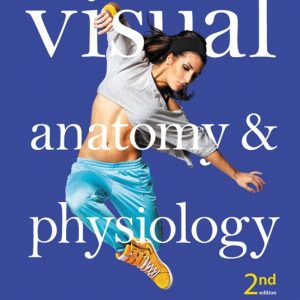This is completed downloadable of Solution Manual for Empowerment Series Understanding Human Behavior and the Social Environment, 10th Edition
Product Details:
- ISBN-10 : 1305663756
- ISBN-13 : 978-1305663756
- Author: Charles Zastrow, Karen K. Kirst-Ashman
Zastrow and Kirst-Ashman’s UNDERSTANDING HUMAN BEHAVIOR AND THE SOCIAL ENVIRONMENT, 10th Edition looks at the lifespan through the lens of social work theory and practice, covering human development and behavior theories within the context of family, organizational, and community systems. Using a chronological lifespan approach, the book presents separate chapters on biological, psychological, and social impacts at the different lifespan stages with an emphasis on strengths and empowerment. Part of the Brooks/Cole Empowerment Series, this edition is completely up to date and thoroughly integrates the core competencies and recommended practice behaviors outlined in the current Educational Policy and Accreditation Standards (EPAS) set by the Council on Social Work Education (CSWE).
Table of Content:
- Brief Contents
- Contents
- Preface
- About the Authors
- Ch 1: Introduction to Human Behavior and the Social Environment
- Explain the Importance of Foundation Knowledge for Social Work with an Emphasis on Assessment
- Review the Organization of This Book That Emphasizes Life-Span Development
- Describe Important Concepts for Understanding Human Behavior
- Employing Conceptual Frameworks for Understanding Human Behavior and the Social Environment: A Perso
- Employ a Conceptual Framework for Understanding Human Behavior and the Social Environment: Ecosystem
- Recognize People’s Involvement with Multiple Systems in the Social Environment
- Examine Human Behavior in the Context of Community Macro Systems
- Examine Human Behavior in and with Organizational Macro Systems
- Recognize Social Worker Roles in Organizational and Community Systems
- Chapter Summary
- Ch 2: Biological Development in Infancy and Childhood
- Describe the Dynamics of Human Reproduction
- Early Functioning of the Neonate
- Explain Normal Developmental Milestones for Infants and Children
- Profiles of Normal Development for Children Ages 4 Months to 11 Years
- Significant Issues and Life Events
- Examine the Abortion Controversy: Impacts of Social and Economic Forces
- Explain Infertility
- Chapter Summary
- Ch 3: Psychological Development in Infancy and Childhood
- Summarize Psychological Theories about Personality Development
- Examine Piaget’s Theory of Cognitive Development
- Review the Information-Processing Conception of Cognitive Development
- Apply Vygotsky’s Theory of Cognitive Development
- Explain Emotional Development
- Examine Self-concept, Self-esteem, and Empowerment
- Significant Issues and Life Events
- Discuss Intelligence and Intelligence Testing
- Analyze Intellectual Disabilities and the Importance of Empowerment
- Examine Learning Disabilities
- Discuss Attention Deficit Disorder
- Chapter Summary
- Ch 4: Social Development in Infancy and Childhood
- Explain the Concept of Socialization
- Analyze the Family Environment
- Apply Systems Theory Concepts to Families
- Assess the Family Life Cycle
- Describe Learning Theory
- Apply Learning Theory Concepts to Practice
- Examine Common Life Events That Affect Children
- Assess Relevant Aspects of the Social Environment
- Examine Child Maltreatment
- Chapter Summary
- Ch 5: Ethnocentrism and Racism
- Define and Describe Ethnic Groups, Ethnocentrism, Race, Racism, Prejudice, Discrimination, Oppressio
- Ethnic Groups and Ethnocentrism
- Race and Racism
- Aspects of Social and Economic Forces: Prejudice, Discrimination, and Oppression
- Racial and Ethnic Stereotypes
- Racial and Ethnic Discrimination is the Problem of Whites
- Race is a Social Concept
- Institutional Values and Racism: Discrimination in Systems
- Outline the Sources of Prejudice and Discrimination
- Sources of Prejudice and Discrimination
- Summarize the Effects and Costs of Discrimination and Oppression and Describe the Effects of Discrim
- Impacts of Social and Economic Forces: The Effects and Costs of Discrimination and Oppression
- Stereotyping and Multiculturalism: A Perspective
- Intersectionality of Multiple Factors
- The Effects of Discrimination on Human Growth and Development
- Suggest Strategies for Advancing Social and Economic Justice
- Community Strategies to Promote Social and Economic Justice
- Asset-Based Community Development
- Human Rights and Social Justice
- Outline Some Guidelines for Social Work Practice with Racial and Ethnic Groups
- Social Work Practice with Racial and Ethnic Groups
- Forecast the Pattern of Race and Ethnic Relations in the United States in the Future
- The Future of U.S. Race and Ethnic Relations
- Chapter Summary
- Ch 6: Biological Development in Adolescence
- Define Adolescence
- Describe Major Physical Changes during Adolescence
- Explain Psychological Reactions to Physical Changes
- Significant Issues and Life Events
- Describe Sexual Activity in Adolescence
- Assess Sex Education and Empowerment
- Identify Sexually Transmitted Infections
- Explain Major Methods of Contraception
- Chapter Summary
- Ch 7: Psychological Development in Adolescence
- Explore Identity Formation in Adolescence
- Examine Race, Culture, Ethnicity, and Identity Development
- Explore Moral Development
- Review Fowler’s Theory of Faith Development
- Significant Issues and Life Events: Assertiveness and Suicide
- Assess Empowerment through Assertiveness and Assertiveness Training
- Explore Suicide in Adolescence
- Chapter Summary
- Ch 8: Social Development in Adolescence
- Describe the Social Development Changes That Adolescents Undergo
- Social Development Changes in Adolescence
- Describe Some Major Problems Encountered by This Age Group: Eating Disorders
- Social Problems
- Understand Theoretical Material on the Causes and Treatments of These Problems
- Describe Some Major Problems Encountered by This Age Group: Emotional and Behavioral Problems
- Understand Theoretical Material on the Causes and Treatments of These Problems
- Describe Some Major Problems Encountered by This Age Group: Crime and Delinquency
- Understand Theoretical Material on the Causes and Treatments of These Problems
- Describe Some Major Problems Encountered by This Age Group: Delinquent Gangs
- Understand Theoretical Material on the Causes and Treatments of These Problems
- Understand Material on Social Work with Groups, Including Theories about Group Development and Theor
- Empowerment through Social Work with Groups
- The Servant Leadership Approach
- Chapter Summary
- Ch 9: Gender, Gender Identity, Gender Expression, and Sexism
- Define Gender, Gender Identity, Gender Expression, and Gender Roles
- Discuss the Social Construction of Gender
- Examine the Complexities of Gender, Gender Identity, and Gender Expression
- Evaluate Traditional Gender-Role Stereotypes over the Life Span
- Assess Some Differences between Men and Women
- Significant Issues and Events in the Lives of Women
- Discuss Economic Inequality between Men and Women
- Examine Sexual Harassment
- Review Sexist Language
- Examine Rape and Sexual Assault
- Explore Domestic Violence and Battered Women
- Identify Means of Empowering Women
- Chapter Summary
- Ch 10: Biological Aspects of Young and Middle Adulthood
- Recognize the Contributions of Physical Development, Health Status, and Other Factors to Health duri
- Young Adulthood
- Describe the Physical Changes in Middle Adulthood, Including Those Affecting Physical Appearance, Se
- Middle Adulthood
- Describe the Midlife Crises Associated with Female Menopause and Male Climacteric
- Summarize Sexual Functioning in Middle Age
- Describe AIDS-Its Causes and Effects; How It is Contracted; How Its Spread Can Be Prevented; and Und
- People Living with AIDS: A Population-at-Risk
- Chapter Summary
- Ch 11: Phsychological Aspects of Young and Middle Adulthood
- Describe Erickson’s Theories of Psychological Development during Young and Middle Adulthood
- Intimacy versus Isolation
- Generativity versus Stagnation
- Describe Peck’s Theory of Psychological Development during Middle Adulthood
- Peck’s Theories of Psychological Development
- Describe Levinson’s Theories of Life Structure, Life Eras, and Transitions during Adulthood
- Levinson’s Theories of Life Structure, Life Eras, and Transitions for Men
- Summarize Maslow’s Theory on Hierarchy of Needs
- Maslow’s Hierarchy of Needs
- Describe Emotional Intelligence and Social Intelligence
- Emotional Intelligence
- Social Intelligence
- Describe Nonverbal Communication Cues
- Mezzo-System Interactions: Nonverbal Communication
- Summarize Glasser’s Choice Theory of Human Behavior
- Choice Theory
- Describe Gawain’s Theories about Intuition and How Human Behavior is Affected by It
- Intuition
- Understand the Issue of Substance Abuse
- Chemical Substance Use and Abuse
- Chapter Summary
- Ch 12: Sociological Aspects of Young and Middle Adulthood
- Describe the Following Lifestyles and Family Forms That Young Adults May Enter Into: Marriage, Cohab
- Interaction in Family Systems: Choosing a Personal Lifestyle
- Describe Three Major Sociological Theories about Human Behavior: Functionalism, Conflict Theory, and
- Macro-Social-System Theories
- Understand Three Social Problems That Young and Middle-Aged Adults May Encounter: Poverty, Empty-She
- Poverty: Impacts of Social and Economic Forces
- Understand Material on Assessing and Intervening in Family Systems
- Assessing and Intervening in Family Systems
- Summarize Material on Social Work with Organizations, Including Several Theories of Organizational B
- Social Work with Organizations
- Value Orientations in Organizational Decision Making
- Describe Liberal, Conservative, and Developmental Perspectives on Human Service Organizations
- Liberal, Conservative, and Developmental Perspectives on Human Service Organizations
- Chapter Summary
- Ch 13: Sexual Orientation
- Explain Sexual Orientation
- Discuss Conceptual Frameworks Concerning Sexual Orientation
- Describe Lesbian and Gay Lifestyles
- Explore Significant Issues and Life Events for Lesbian and Gay People
- Chapter Summary
- Ch 14: Biological Aspects of Later Adulthood
- Define Later Adulthood
- What is Later Adulthood?
- Describe the Physiological and Mental Changes That Occur in Later Adulthood
- Understand Contemporary Theories on the Causes of the Aging Process
- Describe Common Diseases and Major Causes of Death among Older Adults
- Diseases and Causes of Death among Older People
- Life Expectancy
- Understand Material on Stress Management and on Other Ways to Maintain Good Physical and Mental Heal
- Wellness: The Strengths Perspective
- Chapter Summary
- Ch 15: Psychological Aspects of Later Adulthood
- Describe the Developmental Tasks of Later Adulthood
- Developmental Tasks of Later Adulthood
- Understand Theoretical Concepts about Developmental Tasks in Later Adulthood
- Theoretical Concepts about Developmental Tasks in Later Adulthood
- Summarize Theories of Successful Aging
- Theories of Successful Aging: The Strengths Perspective
- Understand the Impact of Key Life Events on Older People
- The Impact of Life Events on Older People
- Understand Guidelines for Positive Psychological Preparations for Later Adulthood
- Guidelines for Positive Psychological Preparation for Later Adulthood: The Strengths Perspective
- Summarize Material on Grief Management and Death Education
- Grief Management and Death Education
- Chapter Summary
- Ch 16: Sociological Aspects of Later Adulthood
- Summarize the Specific Problems Faced by Older People and the Causes of These Problems
- Older People: A Population-at-Risk
- Problems Faced by Older People
- Describe the Current Services to Meet These Problems and Identify Gaps in These Services
- Current Services: Macro-System Responses
- Social Work with Older People
- Understand the Emergence of Older People as a Significant Political Force in Our Society
- Older People: A Powerful Political Force
- Describe a Proposal to Provide Older People with a Meaningful, Productive Social Role in Our Society
- Changing a Macro System: Finding a Social Role for Older People
- Chapter Summary
- Bibliography
- Name Index
- Subject Index





